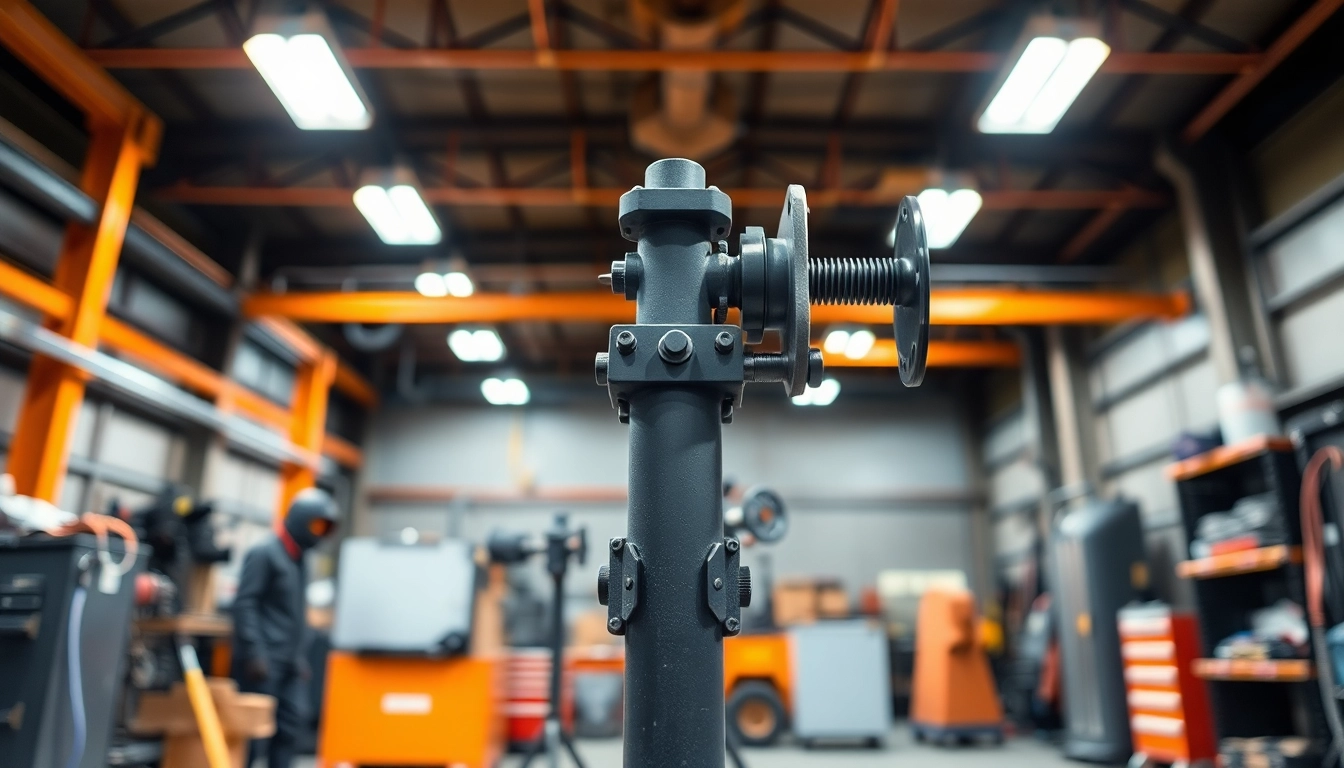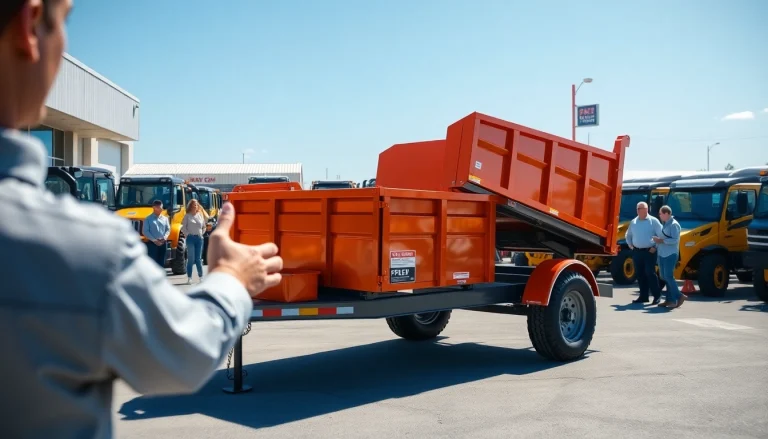Understanding Pipe Stands
Definition and Purpose of Pipe Stands
Pipe stands are essential tools in various industrial settings, particularly in construction, plumbing, and welding. These stands provide support and stabilization for pipes during operations such as cutting, welding, and assembly. Without appropriate support, heavy pipes can pose hazards, leading to accidents or injuries. Pipe stands are also invaluable for ensuring precision and quality in welding processes, where maintaining the correct angle and position is critical.
A pipe stand typically consists of a vertical post supporting a horizontal platform, allowing workers to adjust the height and angle of the pipe by using various mechanisms. The stands are engineered to manage weight effectively while ensuring safety and stability. They can accommodate different pipe sizes and weights, making them versatile tools in the workspace.
Different Types of Pipe Stands
Pipe stands are categorized based on their design, purpose, and capacity. Here are some of the common types:
- Fixed Pipe Stands: These are sturdy, non-adjustable stands used for securing pipes in a specific location. They are ideal for environments where pipe position does not change frequently.
- Adjustable Pipe Stands: Adjustable stands come with telescoping sections that allow users to change the height and positioning of the pipe. These are perfect for projects that require different working heights.
- Jack Stands: Similar to adjustable stands, jack stands provide additional height adjustments through screw mechanisms. They are commonly used in welding and plumbing activities that demand precise positioning.
- Roller Stands: Designed for easy mobility, roller stands allow pipes to be moved smoothly along the workstation. They are beneficial for lengthy projects when pipes need to be repositioned frequently.
- Heavy-Duty Stands: Engineered for extreme weight capacities, these stands are used in industrial applications, where they must support large or heavy pipes securely.
Common Applications in Welding and Fabrication
In welding and fabrication, pipe stands serve multiple roles:
- Pretreatment and Preparation: Pipe stands are employed to elevate pipes, making it easier for welders to apply coatings or perform measurements before the actual welding process.
- Welding Operations: During welding, maintaining a steady position is crucial for achieving quality welds. Pipe stands provide stability and correct angles needed for effective joining processes.
- Inspection and Maintenance: When inspecting pipes for damages or conducting regular maintenance, stands elevate pipes to an accessible height, allowing workers to evaluate them safely without manual handling.
- Storage and Organization: On job sites, pipe stands can double as a method for organizing pipes, ensuring they are stored safely off the ground and in an orderly manner to improve workflow.
Key Features to Look for in Pipe Stands
Weight Capacity and Stability
When selecting pipe stands, the weight capacity is crucial. It is imperative to choose stands that can support the maximum weight of the pipes being used. Most manufacturers provide specifications regarding the load-bearing capacity, typically measured in pounds or tons. Stability is equally critical; stands with a broader base can generally provide better support and prevent tipping during operations.
Adjustability and Ease of Use
Adjustable stands offer flexibility in height and angle alterations, which can significantly improve ergonomic working conditions. Look for stands that can be easily adjusted with minimal effort, preferably with one hand, to streamline operational efficiency. Ensuring that the adjustment mechanisms are intuitive is essential for quick setups and changes during work.
Durability and Material Quality
The longevity of a pipe stand is heavily influenced by the materials used in construction. Sturdy materials like steel provide robustness, while also being resistant to wear and tear, which is vital in industrial settings. Look for products that are coated or treated to prevent rust and corrosion, ensuring reliable performance over time.
Comparing Top Brands of Pipe Stands
Industry Leaders and Their Offerings
Several brands dominate the pipe stand market, offering a range of products that match various needs. Brands like Sumner, B&B, and Ridgid have established their reputations based on quality and user trust. For instance, Sumner’s offerings include a versatile selection of adjustable stands tailored for professional welders, while B&B is known for its heavy-duty options suitable for rigorous applications.
Cost vs. Quality Analysis
Budget constraints often play a significant role in the purchasing decision. Initially, lower-cost stands might look appealing; however, investing in high-quality, durable products can reduce replacement costs and improve safety in the long run. Evaluating the cost against the weight capacity and features can provide a clearer picture of value.
User Reviews and Recommendations
Reading user reviews can be enlightening, as they offer real-world insights about performance and durability. Users typically share experiences with different models, noting aspects such as ease of setup, stability under load, and any issues encountered during usage. Recommendations from experienced professionals in the field can also guide new buyers in making informed decisions.
Best Practices for Using Pipe Stands
Setting Up Your Work Area
A well-organized work area significantly influences productivity and safety. Ensure that the pipe stands are placed on a flat, stable surface to prevent tipping and accidents. Clear the workspace of unnecessary clutter, and position all tools and materials at arms reach to minimize movement and distraction during operations.
Proper Techniques for Loading and Unloading Pipes
When loading pipes onto stands, it’s vital to lift safely and use mechanical assistance if necessary. Avoid overreaching or twisting your body, which can lead to injuries. Ensure that the pipe is horizontal and securely placed within the support points before performing any work on it. Similarly, when unloading, take care to lower the pipes gently, using proper lifting techniques.
Safety Guidelines and Maintenance Tips
Safety should always be a priority when working with heavy equipment. Ensure that stands are rated for the weight of the pipes being supported, and inspect them regularly for any signs of wear or damage. During maintenance, check adjustable mechanisms for smooth operation and clean any debris that can hinder functionality. Ensure to train all personnel on the safe use of pipe stands to mitigate risks of accidents.
Frequently Asked Questions About Pipe Stands
What is the ideal height for a pipe stand?
The ideal height for a pipe stand largely depends on the nature of the work being done. It should allow the operator to comfortably reach the pipe without excessive bending or stretching. Generally, the height can be adjusted to suit various operations, but many stands range from 30 to 60 inches.
Can pipe stands be used for different pipe sizes?
Yes, many adjustable pipe stands are designed to accommodate various pipe sizes. It’s crucial to check the specifications of the stand to ensure compatibility with your required pipe dimensions. Special adapters may be necessary for certain configurations.
How to choose the best pipe stand for your project?
Choosing the best pipe stand involves evaluating the following factors: the weight capacity needed for your specific pipes, the required height and adjustability, the durability of materials, and the intended application. Additionally, considering user feedback and brand reputation can guide your decision effectively.























+ There are no comments
Add yours